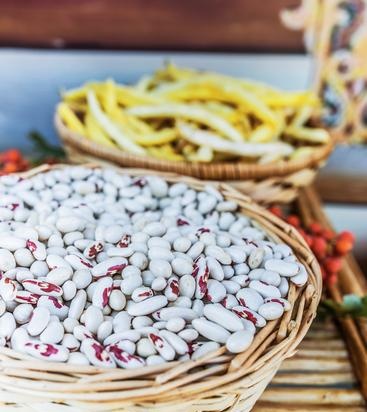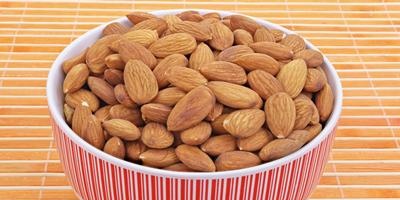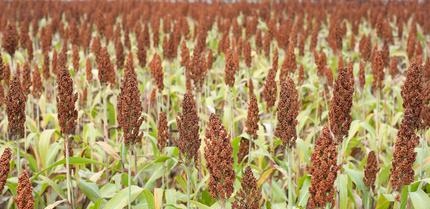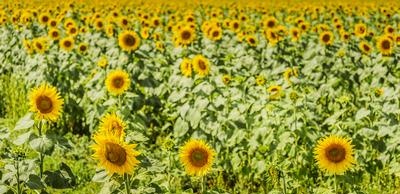|
 The power of the ancient civilizations of America rested on three whales - corn, pumpkin and beans. Beans were revered above all. It was she who filled the mouths of the dead - mummies in Peruvian tombs. The power of the ancient civilizations of America rested on three whales - corn, pumpkin and beans. Beans were revered above all. It was she who filled the mouths of the dead - mummies in Peruvian tombs.
The ancient Aztecs, citizens of the Inca empire, and those who lived before the Incas, as if by agreement, gave this plant the first place in the lunch menu. By some instinct, they guessed in beans not only a source of protein, but also healing substances, which the modern world learned about relatively recently.
The respect for beans in Peru and Mexico was explained by another fact. This leguminous plant is surprisingly resistant to the vagaries of the climate. Especially drought. When grain breads go down and burn out, the beans retain their vigorous appearance and yield a harvest, rescuing the farmer from the trouble. Its prices have always been high. And in addition, she is not touched by the beast. Even livestock. It eats the grass around, and the beans remain intact. So, it is reliable, profitable, convenient.
 After the voyages of Columbus, the Spaniards took this lucrative culture to Europe. True, the Old World had its own, old-world, originally from Asia. But the newcomer was larger. And now our regular beans are the same Mexican beans that the Aztecs and Incas ate. However, in the Old World, she was much less fortunate than at home. Farmers first became imbued with a love for a profitable culture and began to increase the crops, then they cooled down, and then the bean tithes decreased. What is the reason? Extra chores. Sowed a different culture - and wait for the harvest. And with the beans it is a hassle: it must be thinned out on time, and shaded, and fed, and weeded ... Those whose patience was exhausted, threw it and switched to wheat or potatoes. After the voyages of Columbus, the Spaniards took this lucrative culture to Europe. True, the Old World had its own, old-world, originally from Asia. But the newcomer was larger. And now our regular beans are the same Mexican beans that the Aztecs and Incas ate. However, in the Old World, she was much less fortunate than at home. Farmers first became imbued with a love for a profitable culture and began to increase the crops, then they cooled down, and then the bean tithes decreased. What is the reason? Extra chores. Sowed a different culture - and wait for the harvest. And with the beans it is a hassle: it must be thinned out on time, and shaded, and fed, and weeded ... Those whose patience was exhausted, threw it and switched to wheat or potatoes.
Another thing was alarming. For some reason, tetrapods and birds avoided nutritious and tasty beans. Even omnivorous mice that gnaw on paper and stearin candles do not touch the beans. Not in the field, not in the barn. Only hamsters gnaw flower buds during a desperate hunger strike. And then only the vegetable beans. The hamster does not eat grain either. True, a mole breaks in the bushes in the beds, but probably not intentionally, but unintentionally.
The reason for such unanimous disregard is the poisonousness of the peas. The Aztecs, of course, did not poison themselves with them.
And not because the human body is immune to bean poison. It just breaks down when cooked. But we get the hidden advantages of the plant. Bean proteins are very similar in composition to proteins in our blood. Beans are like blood. It is not for nothing that this dish is recommended for people with a sick liver or a disturbed nervous system.
However, observing the reliability, it must be admitted that what has been said applies only to ordinary, cultivated beans. And to some other species. Lima beans, also from Peru (the capital is Lima), are not so harmless peas. And although it also goes into food, it has to be cooked like mushrooms, changing the water several times.
And now about the appearance of our ward. Beans are a herb with trifoliate leaves, like clover. Flowers like peas. They are fiery red in color, and such varieties are not grown for the sake of fruit. For the sake of beauty. More often corollas are white or purple. The stem curls or remains a low bush.
In the tropics, there are forms that climb up the tree trunks. And where it is drier, it descends to the river banks and winds along the thick stalks of the giant arundo cereal (we also have it on Vakhsh). When corn plantations appeared in America, beans immediately moved there and became a weed. Now, instead of arundo, she was wrapping around the corn. Seeing their bread in the arms of the weed, the Indians furiously tore off the ornate garlands. However, they soon noticed that in unweathered fields, the precious maize yields a larger crop, and the grain is better. First, the benefits of fertilization, like any legume. Secondly, beans repel pests. From then on, the Indians deliberately began to run beans on corn.
The tradition continues to this day. Millions of hectares of twinned crops are planted in Romania. In Yugoslavia. And in our south. Our agronomists went even further. The main connoisseur of beans R. Ivanov sowed his brainchild on tea plantations in Georgia. The experience was successful. There was more tea. And the quality is better. Encouraged by his success, Ivanov ventured to apply the same technique in tangerine gardens. Good luck again! Then they began to plant them to other crops - to cabbage, cucumbers, sunflower ...
But perhaps the greatest service was served by our friend on the beet plantations. In previous years in Ukraine, it was used to protect beet hectares from the meadow moth. The essence of the matter is that this legume grass has sharp, coarse hairs on the stems, petioles and veins of leaves. They are of two varieties: long, sparsely sitting and short, with curved, thin ends. An unknown force attracts the moth caterpillars to the beans. They crawl along the stems, along the leaf petioles. They come across the curved tips of the hairs. Steam the skin. One hundred percent perish. It is a pity that this interesting tradition has now been forgotten and replaced by chemistry.
 Seduces beans and bees. Humming honey collectors constantly graze on its flowers. There is a lot of nectar and it is not difficult to get it. Come and get it. The fee is normal: take the pollen to another flower. Seduces beans and bees. Humming honey collectors constantly graze on its flowers. There is a lot of nectar and it is not difficult to get it. Come and get it. The fee is normal: take the pollen to another flower.
You've probably already noticed how differently beans treat their guests. One is allowed to enjoy all the benefits. Others are scared off by a cloud of volatile secretions. Still others find a terrible death on the tips of the hairs. Probably, the wandering world treats beans in the same way. And if our Eurasian beasts and our livestock do not eat them, this does not mean at all that no one eats. At home, in America, there are certainly eaters. This can be judged by the following fact.
In wild beans, peas are not white. They are always painted and in different colors. What else can explain such camouflage, if not the need for protection from being eaten by birds or rodents? It is remarkable that people reacted differently to the color of the peas. Especially in American countries. In Costa Rica, Nicaragua and Honduras, bright red peas are preferred. One farmer almost went broke when he decided to breed and sell blacks. Nobody bought them in the market. But in Mexico, both black and red are equally loved. They make a thick soup, which connoisseurs consider the most delicious of all soups on earth.
Mexicans generally eat beans of any color. But this does not mean that the color of the peas does not matter to them. Nobody will serve black beans as a side dish for pork. There is traditionally white. Black, if not in soup, is also eaten with a tortilla in the form of a sandwich, where beans replace a slice of ham or sausage. I will not list the entire color range of peas and those dishes that require a certain side dish. To do this, it is better to make a trip to the Mexican market. On the most everyday, non-market day, the buyer is offered about 30 samples. And they are all different. Choose between pork, beef, chicken ...
And recently scientists have paid attention to the following circumstance. Despite such an abundance of bean side dishes, wild bean species have not been used to improve yields for thousands of years! Geneticists can safely take on the creation of new varieties. Even the beginning of a new era in the history of beans is expected.
It is difficult to predict what the new era will bring to humanity. Some enthusiastic heads are ready to attribute even non-existent virtues to beans. This turned out to be the doctor F. Kryshtafovich, who settled in Transcaucasia at the beginning of this century. Either he knew that beans are close in composition to human blood, or simply this plant seemed incomparable to him, but he explained the beauty and grace of local residents by the fact that they eat ... beans!
A. Smirnov. Tops and roots
 |
Bean pizza, or Tortilla with beans |
 |
Bean Guyash in Steba DD1 |
 |
Beans with potato pancakes (recipe by Gordon Ramsay) |
 |
Canned beans with vegetables |
 |
String beans (green lobio) with eggs |
 |
Bean Soup (Cuckoo 1055) |
 |
Green beans in onion-cheese sauce |
 |
Beans with bacon, tomatoes and paprika (bob s shunka, domati and cherven piper) Brand 6060 pressure cooker smokehouse |
 |
Beans with oranges in a multicooker Philips HD3060 / 03 |
 |
White Bean and Broccoli Soup in Steba DD2 Multicooker |
 |
Bean paste (bigilla) |
 |
Hot tango (beans in tomatoes) |
 |
String beans (green lobio) with eggs |
 |
Beans with mushrooms in our pressure cooker Oursson 4002 |
 |
Lean beans in the Balkan style (pressure cooker Steba DD2 Eco) |
 |
Beans in pumpkin puree (lean) |
 |
Green beans and cauliflower casserole |
 |
Jamie Oliver Green Beans with Fish and Gremolata |
 |
Jamie Oliver's Homemade Beans |
 |
Beans boiled in a Brand 6050 pressure cooker |
 |
Beans "Lima" with turkey in a creamy sauce |
 |
Greek beans in slow cooker Kenwood CP 707 |
 |
Lobio or canned green beans in tomatoes with carrots and peppers (no water, oil, and vinegar) |
 |
Creamy white beans with smoked shells |
 |
Prebranac - Serbian baked beans |
 |
Shiroan (sweet white bean paste) |
 |
Lobio or beans in Georgian (with nuts) |
 |
Lean stewed beans (Steba DD1) |
 |
Bean soup with ORZO pasta |
 |
Slow Cooker Roast with Beans and Pork |
 |
Bean soup with turkey meat |
 |
Chicken soup with beans in a multicooker Tefal RK-816E32 |
 |
Green beans with tomatoes |
 |
Green Beans with Bacon (Grune Bohnen im Speckmantel) |
 |
Asparagus bean salad |
 |
Beans "Texas Ranch" |
 |
Warm mussel salad with beans |
 |
Warm green bean salad with capers |
 |
Spicy beans "Princess on the beans" |
 |
Bean salad of three types of beans. |
 |
Fresh green beans salad |
 |
Beans, cooked in a pot (electric oven) |
 |
Green beans with sour cream and garlic |
 |
Beans with meat in a slow cooker Cucoo |
 |
Black bean brownie for tea |
 |
Red bean salad with honey agarics |
 |
Bean pate with dried apricots and nuts |
 |
Green beans (frozen) in an omelette in a Brand 6051 pressure cooker |
 |
Bean and mint pate |
 |
Beans baked in a pot |
 |
Red Bean Soup - Lobio (Panasonic SR-TMH18) |
 |
Green beans, pumpkin and zucchini baked with cheese |
 |
Lean bean pate mix with sun-dried tomatoes |
 |
Dry White Bean Soup (Cuckoo 1054) |
 |
Pickled green beans |
 |
Green beans in olive oil |
 |
Fried asparagus beans with onions and eggs |
 |
Red bean lobio |
 |
Bean soup with brine |
 |
Beans with zucchini and tomatoes |
 |
Red bean salad with pomegranate |
 |
Beans in tomato |
 |
Bean paste with plums |
 |
Beans, lentils with vegetables (Cuckoo 1054) |
 |
Green beans salad with mushrooms |
 |
Phali from green beans |
 |
Spicy beans with vegetables for the winter |
 |
Beans with vegetables in the Comfort Fy 500 pressure cooker |
 |
Stewed beans with sausages |
 |
Beans and Mango Salad |
 |
Balkan lean beans (Steba DD1 pressure cooker) |
 |
Dominican beans (lean) |
 |
Green beans with paprika (Steba DD1) |
 |
Potted Beans - Ancient Byzantine Recipe in a Panasonic Multicooker |
 |
Beans with vegetables in the Cuckoo 1051 |
 |
Black beans with turkey |
 |
Giant Beans with Smoked Ribs |
 |
Green beans with zucchini in a Panasonic multicooker |
 |
Lean beans in Steba DD1 Eco |
 |
Tomato and Asparagus Bean Salad |
 |
Beans with spinach in a multicooker Brand 37502 |
 |
Vinaigrette with beans and honey agarics |
 |
Stewed cabbage with peas and beans |
 |
Black beans with walnuts (Brand 6050 pressure cooker) |
 |
Borscht with beans, mushrooms and pears |
 |
Lobio or beans in Georgian (with nuts) |
 |
Soup with lima beans and prunes |
 |
Tagine: rice with red beans and boiled cod |
 |
Steamed baked beans 2 options, lean and with ribs (Steba DD1 ECO) |
 |
Beans in Balkan style with smoked meats |
 |
Bean soup (Steba DD1, Steba DD2) |
 |
Breton-style beans |
 |
Bean soup with guacomole |
 |
Bean soup with mushrooms (multicooker Brand 701) |
 |
Bean mix with sausages in a slow cooker |
 |
Bean soup |
 |
Bean soup with beef and smoked meat in a multicooker Bork U600 |
 |
Bob-chorba (bean soup) |
 |
Bean soup |
 |
Yokai Bean Goulash Soup |
 |
Bean cake |
 |
Fasolada (lean bean soup) |
 |
Bean soup with skins |
 |
Lean bean roll with vegetables |
 |
Bean soup with pasta |
 |
Bean smoothie for breakfast or soup for lunch |
|
 The power of the ancient civilizations of America rested on three whales - corn, pumpkin and beans. Beans were revered above all. It was she who filled the mouths of the dead - mummies in Peruvian tombs.
The power of the ancient civilizations of America rested on three whales - corn, pumpkin and beans. Beans were revered above all. It was she who filled the mouths of the dead - mummies in Peruvian tombs. After the voyages of Columbus, the Spaniards took this lucrative culture to Europe. True, the Old World had its own, old-world, originally from Asia. But the newcomer was larger. And now our regular beans are the same Mexican beans that the Aztecs and Incas ate. However, in the Old World, she was much less fortunate than at home. Farmers first became imbued with a love for a profitable culture and began to increase the crops, then they cooled down, and then the bean tithes decreased. What is the reason? Extra chores. Sowed a different culture - and wait for the harvest. And with the beans it is a hassle: it must be thinned out on time, and shaded, and fed, and weeded ... Those whose patience was exhausted, threw it and switched to wheat or potatoes.
After the voyages of Columbus, the Spaniards took this lucrative culture to Europe. True, the Old World had its own, old-world, originally from Asia. But the newcomer was larger. And now our regular beans are the same Mexican beans that the Aztecs and Incas ate. However, in the Old World, she was much less fortunate than at home. Farmers first became imbued with a love for a profitable culture and began to increase the crops, then they cooled down, and then the bean tithes decreased. What is the reason? Extra chores. Sowed a different culture - and wait for the harvest. And with the beans it is a hassle: it must be thinned out on time, and shaded, and fed, and weeded ... Those whose patience was exhausted, threw it and switched to wheat or potatoes.



















































































































